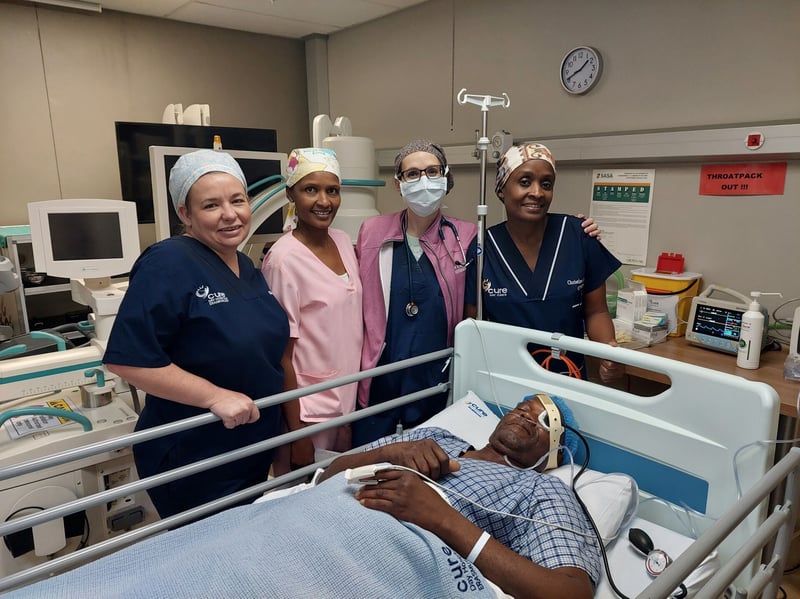Cataracts Leading Cause of Preventable Blindness
Written by: Linda Christensen Save to Instapaper
Cataracts remain the leading cause of blindness globally, despite being entirely preventable. In South Africa, an estimated 250,000 people are blind due to untreated cataracts .
Although cataract surgery is one of the most cost-effective medical interventions, between 40-60% of those suffering from visual impairment experience vision loss directly due to cataracts, negatively impacting the social, psychological, and financial well-being of individuals and their families.
Access to Care Challenges
Dr Bayanda Mbambisa, Chairperson of the Right to Sight Trust, a non-profit initiative of the Ophthalmological Society of South Africa (OSSA), explains that while cataracts typically develop after age 40, accelerated vision loss can be seen in younger patients, particularly those with diabetes.
In South Africa, many public hospitals lack the necessary ophthalmologists, equipment, and consumables required for cataract surgery, resulting in long backlogs, with some patients waiting over a year for surgery.
OSSA Right to Sight Trust Initiative
In an effort to combat this preventable cause of blindness, the OSSA Right to Sight Trust is performing over 1,000 free cataract surgeries this year, with more than 700 scheduled for October, Eye Care Awareness Month. This initiative is made possible by the generosity of 109 ophthalmologists and 35 private hospitals, as well as the support of funding partners, individual donors, and medical device companies that contribute lenses and surgical consumables.
Over the past nine years, the Trust has successfully conducted 4,446 free cataract surgeries, equivalent to more than R124 million in medical services. These efforts have not only restored sight but have also impacted over 26,000 people indirectly, as cataract surgery benefits entire households.
The Ripple Effect of Cataract Surgery
"For every individual impacted by cataract surgery, six other people in their household are positively affected," explains Dr Mbambisa. "Families, who previously had to provide constant care, are freed from this burden, allowing them to resume educational, employment, and social activities, contributing to greater economic and social stability within communities."
Understanding Cataracts
Cataracts occur when proteins in the eye’s natural lens break down, causing the lens to become cloudy, resulting in blurred vision, diminished colour perception, and over time, complete vision loss if untreated. Contributing factors include:
- Smoking
- Eye injuries or surgeries
- Long-term sun exposure without UV protection
Signs of Cataracts
- Blurry or clouded vision, as if looking through a dirty window
- Trouble seeing at night
- Halos around lights
- Sensitivity to light and glare
- Double vision or ghosted images
- Seeing faded or yellow-tinted bright colours
Eye Health Tips
Dr Mbambisa urges everyone to take care of their eye health by:
- Having an annual eye exam for those over 65, or every two years if younger.
- Wearing UV-blocking sunglasses and hats.
- Quitting smoking.
- Eating eye-healthy foods, including fruits, vegetables, leafy greens, nuts, and whole grains.
- Using brighter lights for reading or a magnifying glass.
- Limiting night driving if vision issues arise.
- Managing other health conditions, such as diabetes.
- Visiting an eye care specialist immediately if vision loss impacts daily activities.
Visit www.righttosight.org to support the Trust’s work and help more patients during Eye Care Awareness Month this October.
Total Words: 514
Social Media Post
Cataracts Leading Cause of Preventable Blindness
Cataracts remain the top cause of blindness in South Africa. Join the OSSA Right to Sight Trust this Eye Care Awareness Month and help provide free cataract surgeries to those in need.
#PreventBlindness #EyeCareAwareness #Cataracts #RightToSight #pressrelease #AfricaNewsroom #bizcommunity #publicrelations #africa #southernafrica #southafrica
Get new press articles by email
Latest from
- To Arrest a Student Is to Arrest the Future
- The Crumbling Foundations of South Africa’s Steel Industry - A Wake-Up Call for Reform
- Upscale Christmas Lunch with a Local Twist
- Leveraging Artificial Intelligence to Leapfrog African Industrialisation
- Unseen Struggles Chronic Illness and Disability in the Workplace
- SUNDAZE SUMMER EVENTS AT DURBANVILLE HILLS
- Stigma - The Leading Cause of Untreated Mental Health
- Workplace Support Critical After Breast Cancer Diagnosis
- Make Your Home Feel Like a Top Hotel with These Spring Cleaning Tips
- Work Can Be Both Good and Bad for Mental Health
- Breast Cancer on the Rise in Younger South African Women
- How to give longevity to your leftovers
- Five reasons why “moral regeneration” failed in South Africa
- Durbanville Hills Official Wine Partner To Masterchef South Africa
- Your cute tote bag is not that green
The Pulse Latest Articles
- Zuru Turns Fifa World Cup 2026™ Into The Next Global Collectibles Phenomenon (December 17, 2025)
- A Refreshing Spin On A Joburg Roadblock With Pura Soda And Saps (December 17, 2025)
- Education Is The Frontline Of Inequality, Business Must Show Up (December 11, 2025)
- When The Purple Profile Pictures Fade, The Real Work Begins (December 11, 2025)
- Dear Santa, Please Skip The Socks This Year (December 10, 2025)
